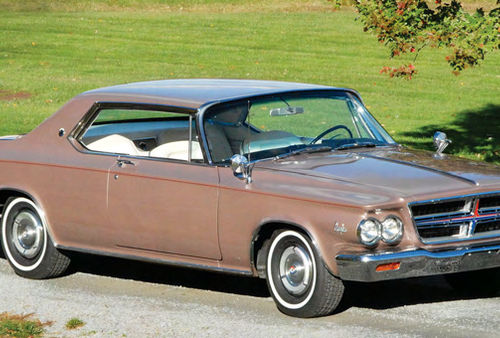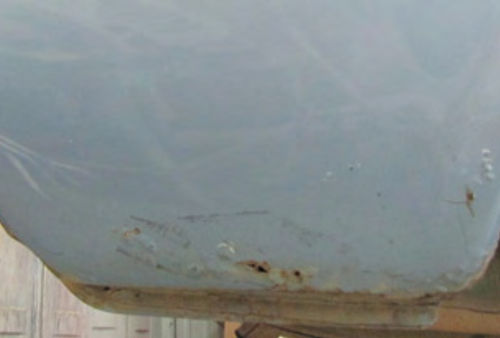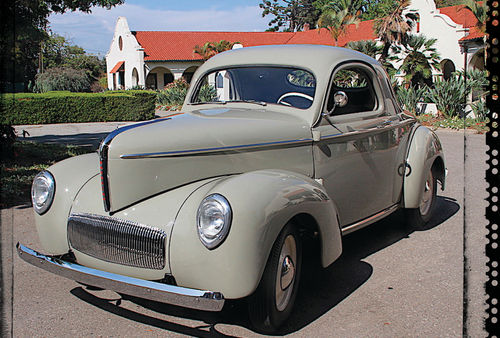Restoring mechanical brakes on a classic car, and history of their usage
MODERN BRAKES WORK ON a system that relies on hydraulic pressure to transfer pedal pressure to braking power. It’s safe, reliable and has been the system of choice for many years. Prior to this engineering advancement, most vehicles used mechanical brakes. Although fundamental by modern standards, mechanical brakes when properly maintained work quite well. As is usually the case, if you don’t take care of something it doesn’t work right or it may even break. Much of the criticism about mechanical brakes has more to do with lack of maintenance than about mechanical failure or poor design.
When mechanical brakes were standard equipment, the automotive repair business was not always reading off the same sheet of paper as the manufacturers, if you know what I mean. Mechanics in those days often were instructed by their boss or by the owner of the vehicle to complete repairs as cheaply as possible. For those who knew how to successfully repair brakes, and who had the correct tools and replacement parts, performance was quite satisfactory. However, there could be serious consequences when a mechanic didn’t know what he was doing or when brake systems were jury-rigged or neglected. (Another good example of how the more things change the more they stay the same.)

Only a few manufacturers fitted their cars with hydraulic brakes prior to the mid-1930s. Cadillac and Chevy introduced hydraulic brakes in 1936. The Packard One Twenty was introduced with hydraulic brakes in 1935 and all Packards were switched to hydraulics by 1937. Ford and Lincoln moved to hydraulics in 1939. Chrysler was way ahead of the pack having implemented hydraulic brakes in 1925.
Repairing and maintaining mechanical brakes should not be a mystery. The basic braking principles are the same as modern cars.
In our example the mechanical brake system will be from a Model A Ford. The Model A Ford brakes (and the brakes from other 1930s-era Fords) were probably the most maligned brakes of all time. I would say this is because there were simply more of these cars on the road than any other car and therefore more opportunities for failure because of the sheer numbers. Another reason may have been because so many Ford owners tried to fix their cars themselves, whether they knew much about it or not. (Opinions on this subject can be sent to Letters to the Editor in care of this magazine.) The Ford design was similar to all others, so most of the advice and insight provided here will apply to other mechanical brake systems as well.
Mechanical brake systems required simple leverage to transfer brake pedal pressure to push the brake shoes against the drums. Each brake shoe must make full contact with the drum in order to get maximum stopping friction. The use of the correct brake lining is mandatory for good performance. The original lining consisted of woven asbestos threads combined with strands of fine copper wire. It provided effective stopping power. Modern replacement linings no longer use asbestos because it has been determined to be a health hazard. Substitute materials such as Kevlar have proved to be efficient and durable and a worthy replacement for the asbestos. Inexpensive brake lining materials are available, but my advice is to buy quality and you’ll be much happier with your brake performance.
The best place to begin a mechanical brake system restoration is at the brake pedal. Usually the pedal shaft and the bushing will be worn. On a Model A these are easily replaced with reproduction parts. If you want to salvage the pedal shaft, fill in the worn areas with beads from an electric weld or a brazing rod. Then turn them on a metal lathe until they are the correct size.
Expensive cars of this vintage were engineered with grease fittings in order to lubricate the bushings. You can add these fittings to the brake and clutch pedals of less expensive cars, but if you are preparing a show car, judges won’t like what you have done. For those who don’t care about correctness when it comes to matters such as this, an 11/32-inch hole and a 1/8 inch pipe tap will be required to install the grease fitting.
Check all the clevises and pins. If there is “play” in the connection, you have a couple of choices. You can replace them or you can try using oversized pins to take out the play. In our example the original pins are 5/16 inch and the oversized replacements are 21/64 inch. If you need to drill the clevises to make the oversized pins fit, use a drill press for accuracy rather than a hand-held drill. An alternative would be to carefully use a round file to enlarge the clevises. If the clevis hole is too large, fill it with braze and re-drill the hole to the exact pin size.
If you drill a 1/16-inch hole in the ends of the clevises, it will allow lubrication of the clevises and pins. It is easily attended to with a pressure oil can. I use STP because it sticks to the surface without dripping.

The central component in the mechanical, internal-expanding, brake system is the backing plate (Illustration. 1, #13). It is a round, stamped-steel disc approximately the same size as the brake drum. On the rear wheels it is located on the end of the axle housing. On the front wheels it is attached to the moveable steering axles.
The two brake shoes are contained within the brake drum and the backing plate. Ford used rollers (a 1/4-inch plated washer) on each side of the brake shoe (Illus. 2, #42). These permit the shoes to move along a brake shoe track. The rollers and roller pins should be replaced if they show any effects from wear or old age.
The track is the weakest link in the entire system. It wears rapidly. You can salvage a worn track by adding weld and grinding or filing it to a straight edge again. The front brake roller track should be exactly 17/16-inch below the bottom of the studs that hold the brake springs. The rear roller track should be exactly 1 inch below the bottom of the roller track studs. The front tracks should be parallel to the ground, not tilted up or down. The rear tracks will be perpendicular to the ground.

Both rear and front brakes use an adjusting wedge (illus. 2, #40 and illus. 1, #14) to establish an operating clearance between the shoe and the drum. The wedge is sometimes worn, even though it is a heat-treated metal. The second weakest link in the mechanical brake system is the length of the adjusting shafts that rest against the adjusting wedge (illus. 1, #16 and illus. 2, #36). The shafts must be equal in length or one shoe will be farther from the adjusting wedge than the other. As a result the brake shoes will be unequal distances from the drums in the initial adjustment.
All the rear hand-brake toggles should be accurately fitted with new toggle lever pins and any enlarged holes must be re-sized (illus. 2, #16, #18).
Other areas that require attention include: the service brake shaft, hand-brake shaft and the emergency brake carrier. The same treatment (welding or brazing) that was used on the brake pedal shafts can be used to enlarge these shafts and ensure a perfect fit if the years of use have made them sloppy. Bushings should be examined and replaced if necessary.
Pack each brake adjusting wedge with hi-temp wheel-bearing grease before tapping the wedge cover-plate into place. Use the hi-temp wheel bearing grease to pack the front wheel bearings as well.

While the front brakes are initially adjusted with the wedge adjustment, it is important that the brake lever
(looks like it is part of the front suspension) is in its “at rest” position. If it is not, you will not be able to get enough leverage to make the front brakes work properly. According to the Ford factory specifications, it should be 15 degrees ahead of its “straight up” position. Because there is not a practical way to measure 15 degrees, make certain it is as far forward as possible. This position will be limited by the brake rods.
With the brake lever now in its proper position, it is appropriate to “doctor up” your front brake system by lengthening the actuating rod. The slang term for this is “adding brake pills.” The pills function like spacers and can be purchased or hand-made. The actuating rod is located in the center of the king pin in each front wheel. Another way of lengthening the rod is to add weld to the end as described earlier.
This adjustment is critical. At the same time the brake actuating lever is pulled, the brake shoes should move outward to their “brakes on” position. There can be no play in this adjustment.
With all the brake rods loosened (cables if your car has them), adjust the coarse wedge adjustment, one wheel at a time, until the drums lock. Then back off two or three “clicks” until the brake drum is not dragging on the shoes. Although this is a coarse adjustment, the shoes move less than .010-inch.

Next, adjust the rear wheel “lock up.” Depress the brake pedal 1/2inch and hold it there by wedging a two-by-four between the pedal and the car seat. With this accomplished, adjust the rear brake rods to lock-up the rear wheels. Of course you must have the rear wheels off the ground and the car on jack stands so that you can turn each wheel by hand and realize when the lock-up occurs.
By using the same method of depressing the brake pedal, this time to a depth of 2 inches, the front brake rods can be adjusted to the lock-up point.
These adjustments take time and patience. It may be one of the reasons first-time brake mechanics are not always successful and why the condemnation is often put on the mechanical brakes rather than the impatient mechanic.
To test the brakes under driving conditions, lightly spread some sand or soft dirt on a little-used street or an empty parking lot where you can safely use your new “skid pad.” Drive onto the pad at a speed of about 10 to 15 mph. Apply the brakes hard enough to lock-up the rear wheels. (They should lock-up first because of the pedal positions during the adjustment.) You should be able to tell from the skid marks whether the rear wheels are simultaneously locking up. If not, adjust the rear brake rods by turning the clevis to appropriately lengthen or shorten the rod.
The same test can be used to identify front brake lock-up. However, the front brakes are somewhat trickier to adjust so they lock-up simultaneously. When they don’t the car will pull to one side during braking. Be patient and adjust for precision.















